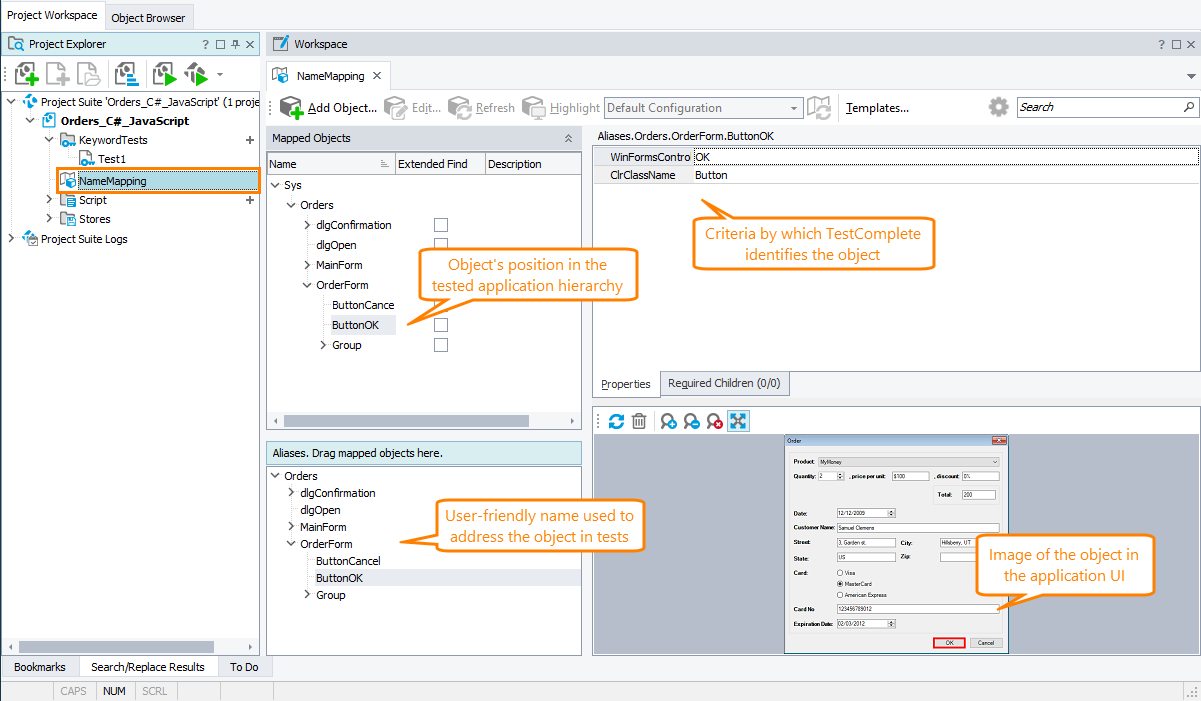TestComplete Tutorial 19 - Adding Objects to the Name Mapping Repository

You can add objects to the Name Mapping repository in several ways: Automatically when recording and editing tests. Manually from the screen or from the Object Browser. From scripts . Mapping Objects Automatically By default, TestComplete adds objects to the Name Mapping repository automatically when you – Record tests, Create checkpoints , Add or edit keyword test operations. This behavior is controlled by the Engines > Name Mapping > Map object names automatically option of TestComplete: If you do not use the Name Mapping repository in your project, you can disable this option to prevent TestComplete from mapping objects. To enable or disable automatic name mapping Select Tools > Options from the TestComplete main menu. This will open the Options dialog. Select the Engines > Name Mapping category. Select or clear the Map object names automatically check box. Click O...




